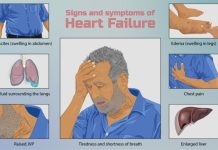Study shows on the basis of Nutri-Score developed by UK, a low nutritional diet increases risk of illnesses and a nutrition labelling system must be incorporated to increase consumer awareness
There have been several studies in the past which link nutrition to higher risk of cancer and other chronic diseases. And even though several other factors are also applicable, nutrition is always given utmost importance. Nutrition as a risk factor can be tackled at an individual level without much medical intervention. There is a need to help consumers be able to make healthier food choices. Designing a strategy to achieve this remains a key challenge in prevention of chronic diseases like heart or metabolic illnesses and cancer.
A cohort study published in PLOS Medicin has shown in a large number of diverse participants across Europe that consumption of more unhealthy foods will lead to higher risk of diseases. Such unhealthy foods include baked goods like cakes and biscuits, puddings, ketchup, sauces, red and processed meat etc. Researchers examined the food intake of 471,495 adult participants from 10 countries in Europe and around 74,000 in the UK. All participants self-reported their food and beverage consumption. Researchers used the British Food Standards Agency nutrient profiling system (FASAm-NPS) the premise of which is to inform consumers whether a certain food is healthy or not. Unhealthy foods are flagged by the agency when having unhealthy level of fat, saturated fat, sugar or salt and are assigned a red, amber or green rating (sometimes even a grade from A to E) suggesting ‘most nutritional to ‘least nutritional’. Every food item is assigned a final score called Nutri-Score which is based upon its composition of vitality (energy), sugar, saturated fat, sodium, fibre and proteins. The score is already being used for food profiling for marketing meals to youth in the UK. The score is calculated for every meal or beverage.
The analysis on participants was adjusted to consider their individual characteristics like physical activity, Body Mass Index (BMI), smoking and drinking habits, education status and self or family medical history of cancer. Researchers first assigned a FSAm-NPS Dietary Index (DI) to every participant’s diet and then computed a model to explain the connection between dietary index and cancer risks. The final Nutri-Score was then calculated which reflected that a diet having lower nutritional content and quality was associated with more cancer risk. The rates of cancer in people who consumed highest amount of junk food was 81.4 cases per 10,000-person year compared to 69.5 cases in people with lowest ‘junk or low nutrients’ food scores where ‘person year’ is an estimated time frame for each participant of the study during which they reported irrespective of the total time they remained in the study. Unhealthy foods led to higher cancer rates at 11 percent compared to healthy eaters. People consuming maximum of junk or low nutrients food showed more risk of colon, digestive tract, oesophagus and stomach cancers. Males specifically had higher risk of lung cancer and females had higher risk of liver and breast cancer post menopause. Interestingly, participants from the UK, France and Germany were more junk food eaters, people from Italy, Greece, Spain and Norway made more healthier food choices while Denmark and Netherlands were average.
Obviously, people consuming junk food also do not exercise and have weight problems like being overweight. Such lifestyle factors also contribute to cancer risk as diet and lifestyle are related qualities. A major constraint of this study as has been with many other cohort studies is the limitation associated with self-reporting by participants as people tend to under report. Many foods which are designated as nutritionally adequate may still contribute to risk if eaten in excess or if toxic. More insights are needed to comprehend how high BMI, sedentary lifestyle, alcohol addiction and lack of exercise can counteract even a highly nutritional diet.
This study supports relevance and use of the British Food Standards Agency nutrient profiling system (FASAm-NPS) as a nutrient profiling system for calculating a simple nutrition score called Nutri-score. And if such a unique nutrition label-system is made compulsory to display in packaging it can be more beneficial in helping people make healthy food choices in the UK and Europe. The primary objective of implementing this is to inform a consumer, especially the at-risk population about nutrition dimension of a food item at the time of purchase. It also encourages producers to improve the quality of their products and increase awareness about nutrition in general. A five-colour Nutri-Score is implemented in France and has been recently approved by Belgium. Public health policies should increase awareness about such a score in improving health outcomes.
***
{You may read the original research paper by clicking the DOI link given below in the list of cited source(s)}
Source(s)
Deschasaux M et al. 2018. Nutritional quality of food as represented by the FSAm-NPS nutrient profiling system underlying the Nutri-Score label and cancer risk in Europe: Results from the EPIC prospective cohort study. PLOS Medicine. 15(9). https://doi.org/10.1371/journal.pmed.1002651
***




































